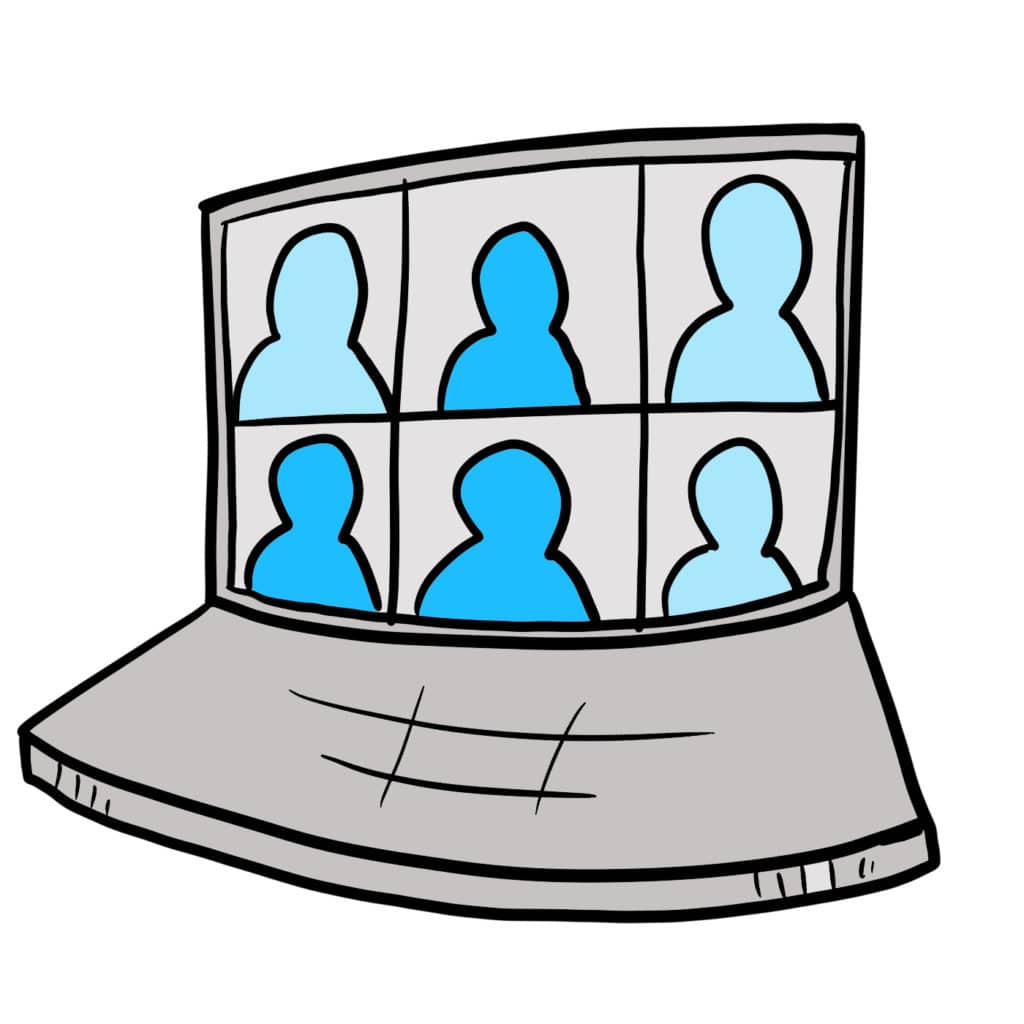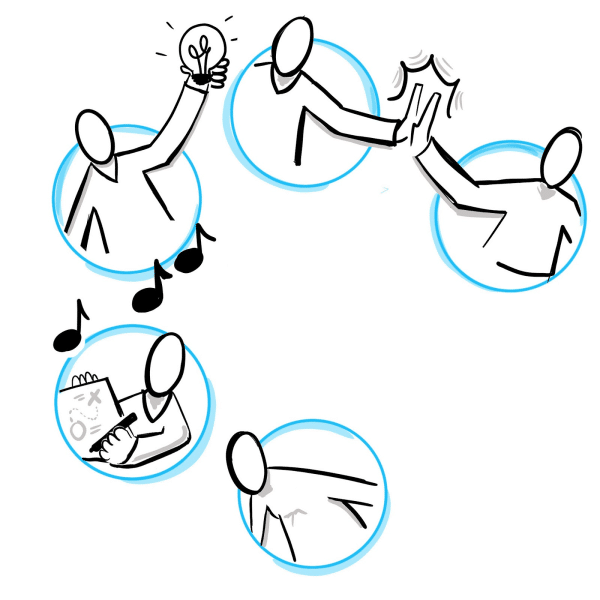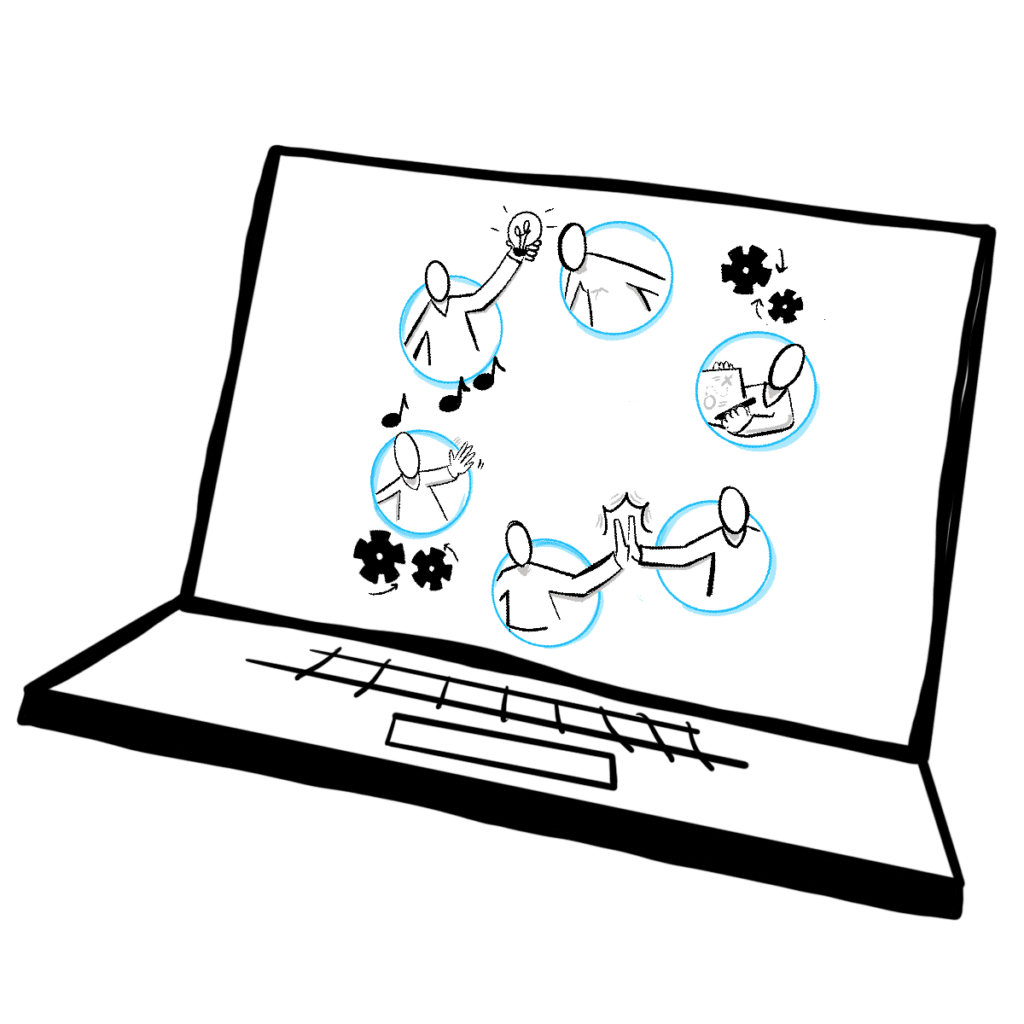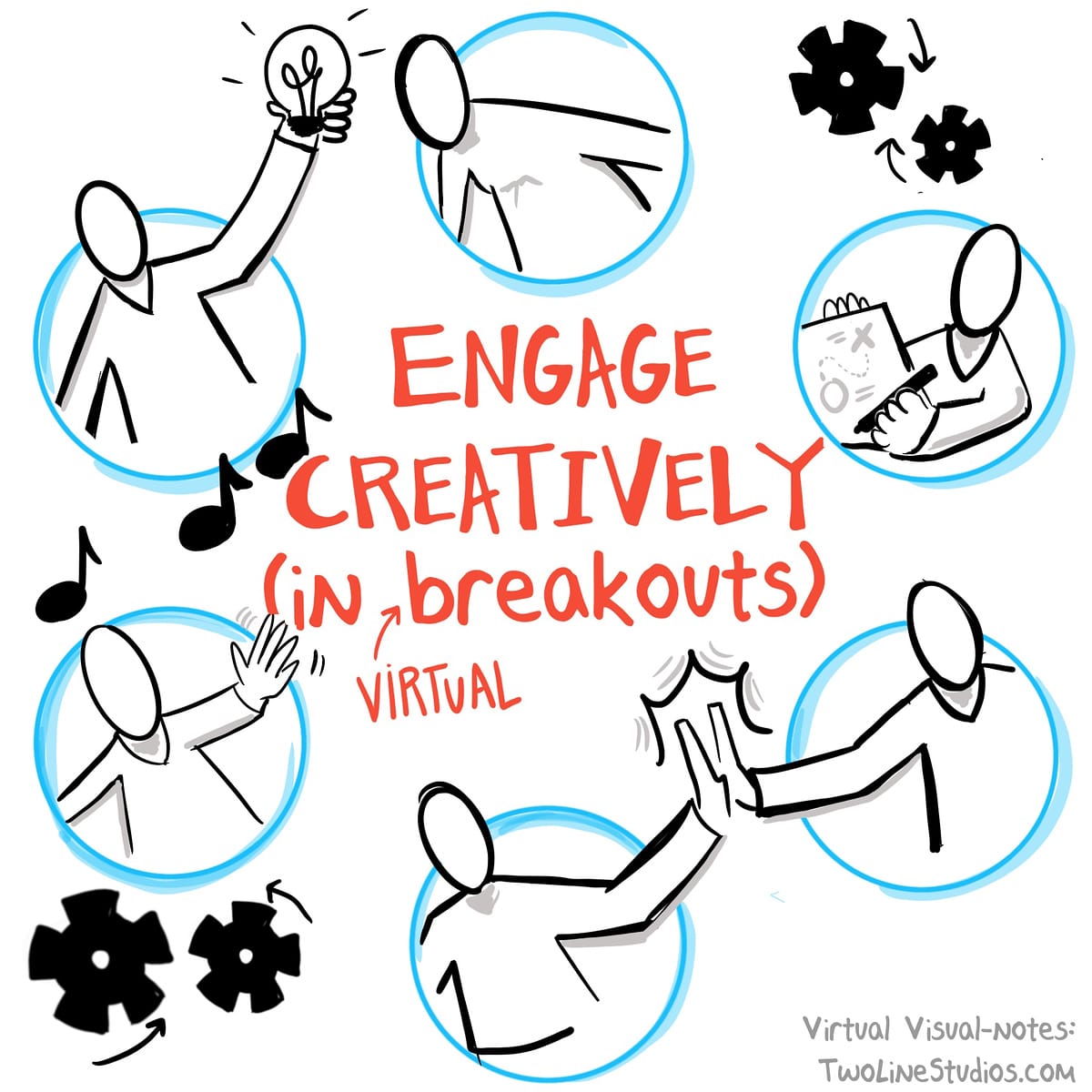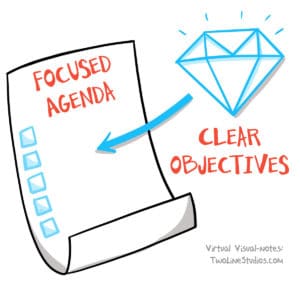I have worked as an entrepreneur for the past 20 years, doing my part to build out the Internet. During that time, I’ve been comforted by the idea that helping humans connect is good for the planet.
But mass interconnection has drawbacks. Communication bubbles deepen tribal divisions. Mega-companies, like Amazon, are wiping out local brick-and-mortar shops. Misinformation abounds and we’re increasingly aware of our lack of privacy on the Internet. And, ironically, many of us feel more isolated than ever before.
Thanks to the pandemic, the world of virtual communication has seen a building boom. Clubhouse, an app that lets people gather in audio chat rooms, is one of the newest structures on the market; announcements of its arrival exploded onto front pages and Clubhouse received a $1 billion valuation after just a few months of live service.
Companies like Clubhouse show that virtually, we can build big audiences and communities, and even companies, quickly. But are we architecting thoughtfully? As Winston Churchill said in 1943, “We shape our buildings; thereafter they shape us.” Can we imagine a new way to design these virtual spaces so they reinforce the best of our humanity?
Here’s a small example. Jodie McLean, CEO of EDENS, a real estate owner, operator, and developer, was, like so many other CEOs in 2020, grappling with how to help her newly remote workforce avoid the risk of being divided by this isolation. McLean was also aware that this physical isolation was occurring at the same time that the company needed to come together for conversations about systemic racism perhaps more than ever before. The first thing she tried was a large-format webinar for her 200-person staff. But it didn’t generate real conversation or connection.
The next time, she tried a different virtual structure. Staff were placed in small rooms of ten, faces arranged in a circle. They met for two 90-minute sessions. They had some quiet time to reflect, and then timers and an agenda guided their conversation. They talked about their identities at work and how the issues roiling our country show up in the physical communities EDENS constructs for customers. Staff were apprehensive at first, used to sitting back with cameras off. But after the sessions 95% of the staff raved about their experiences, noting that their conversations were authentic. No professionals facilitated the sessions. At the end of the day, McLean observed, “We’ve never felt more grateful for each other.”
Sitting in circles is a very old idea. When people are in a small group, all facing each other, they feel included. They engage. They offer ideas and share their challenges. Over time, people connect and begin to help each other. Many of our physical spaces are not set up for people to be in circles. Think classrooms, or trading floors, or churches, or auditoriums. These spaces deeply embed ideas of hierarchy and assembly lines and teacher-as-expert. Our move to virtual spaces is a chance to question this.
Double-click on the example of corporate learning and development. From 2000-2012, my previous startup had to grow fast to keep up with an exploding market. We couldn’t hire for new skills fast enough. We needed our people to grow, so our company could grow. I began to focus on what it would take to build a learning culture at work. Unfortunately, the learning tools we had fell short: a corporate “university” filled with out-of-date slide decks, skills training videos, managers coaching subordinates 1:1, a performance management system no one kept up to date, and the occasional one-off workshop. They failed to engage all but a few very self-directed learners.
One thing we tried, though, worked: a “Battle of the Bands,” where about a third of the company took up bass, drums, guitar, keyboards, or singing. Music teachers helped remind people how to learn, how to listen to each other, how to practice. It was an exercise in how important it is to create an engaging experience where learning in teams can push individuals to be their best selves.
Our common corporate learning structures were built for old circumstances. We no longer have to mass-produce workers for assembly-line jobs. Information is no longer scarce, requiring people to gather around an expert. We have the opposite problem: there’s a tsunami of information every day. Our workforce needs highly diverse and flexible creatives that can work together.
Corporate learning and development echoes the education system overall, which is also made of traditional structures and has a similar disengagement problem. While 63% % of kids are served by the four-year college system in the US, 40% of those students do not complete their degree within six years. It makes me think, if more of those students are fully engaged during college would graduation rates increase?
There’s evidence that study groups improve matriculation rates and success, and small groups or “team-based” learning improves the satisfaction of both student and teacher over lectures. The Harkness method, pioneered by Philips Exeter Academy in 1930, in which all classes are conversational and conducted at an oval table, is gaining popularity. Many states now have mandates to use restorative practices, a circles-based approach to community building and repairing at schools, which is proven much more effective than the traditional ways of organizing schools.
In fact, it turns out that many educational approaches draw on the power of circles. They have different names: forum, which is used by organizations such as YPO; communities of practice, which are used across businesses, schools, and in government; text-based dialogue, which is used by the Aspen Institute; and the list goes on. They all have common practices. Harvard Business School programs house their attendees in a living group of eight single rooms around a kitchen, and a coach helps each “living group” jell into a circle that works together on cases and projects.
I’ve personally had some learning experiences in circles that helped me, taught me, and pushed me more than any class or coach or even consultant had done before. In my 30s, I was a first-time leader of a scaling company and my EO and YPO forums, each with 7-8 other CEOs meeting every month, were how I really learned to do that job. When do I reduce staff or leases when the economy was giving out? How do I show up at the office when my dad is slowly passing from ALS at home? How do you negotiate partner differences, is PR worth it, is my public speaking good enough? After exit, I was lucky enough to be picked for the Henry Crown Fellowship, a circle of leaders at similar transition points. In this Fellowship, The Aspen Institute gave me the space to explore values, what I thought was good for society, and next steps. These circles were transformational.
The learning field is bubbling with new ideas, technology, neuroscience, and data science. But quietly one of the oldest ideas is gaining traction with both approaches to learning and how best to work: sitting in a circle.
Almost everything we do at work is performed in a team. Team structure methodologies like Agile (cross-functional teams working sequentially in a structured manner), Scaling up (daily huddles to improve communication), EOS/Traction (working quarterly towards a set of company goals) and Holocracy (employee flexibility to take on tasks in a flat corporate structure) emphasize the importance and power of small teams learning together, quickly. They each have a small-group structured meeting at their heart.
The success of these small group structures relies on teams to collaborate openly. Google’s Aristotle project found that psychological safety – the belief that one will not be punished or humiliated for speaking up with ideas, questions or concerns – was the clearest success factor across hundreds of teams they studied. Circles practices foster this kind of safety, through group conversations where no one dominates the conversation, everyone is made comfortable speaking and feels heard. They help the boss sit alongside you on the team modeling vulnerability, instead of issuing updates and orders from the front of the room.
I spent a lot of energy as CEO trying to produce a consistent corporate culture and alignment throughout the company. But the actual culture that an individual experiences day-to-day has everything to do with their immediate team. We need to learn to lead “teams of teams.” This will help with the ridiculously low level of employee engagement that Gallup reports across our companies year after year. As my Aspen Fellow, now Heineken’s CEO, Dolf van den Brink said to me, “We’ve done a good job of building structure across the global org chart, but not where it matters most: inside teams.”
The idea that led me to found Circles Learning Labs, Inc. (Circl.es) was to help make it easy for people to learn and work in circles. I wondered why everyone in the world doesn’t have a Forum, like I did when I was a new CEO? Or a Fellowship to help them figure out their next career move? I asked myself if I could help solve problems for all the restorative practice leaders or the Holocracy crowd who were increasingly working on this?
When I started experimenting in 2016 I thought that we’d be building a matchmaking service: use LinkedIn to find, for example, eight new marketing leaders at small companies. But it turned out that this part was relatively easy: communities and companies had already collected like-minded peers. We didn’t think we’d have to build a video space at all, but when we experimented with a new interface where people were in a circle instead of a grid, we got incredible reactions. It turned out that all these different kinds of circles have very similar best practices, making it a good candidate for software. It was hard and expensive for companies and communities to set up and run lots of circles – another problem that lent itself to a software solution.
So we’ve set out to build a virtual space where every feature we add or take away fosters authentic human connection and makes it easier to run and scale lots of circles. The outcomes so far leveraging Circl.es with organizations like EDENS, are encouraging:
- Harvard Business School struggled for years to find the right way to support executive education students to practice and apply learned skills after leaving campus. Their “Virtual Living Group” program keeps busy CEOs meeting monthly in circles. When Covid hit, we added Circl.es to their virtual campus, reducing truancy in virtual programs to almost zero and “significantly deepening the in-classroom conversation.”
- Millennium Schools ran circles of teachers and 89% said it improved their ability to support students, 90% said it boosted their wellness, and 92% said it reduced their sense of isolation.
- Ken Blanchard companies found that breakout circles improve workshop outcomes and lead to successful follow-up. “There’s two things that lead to successful learning sustainment – accountability and relationships,” noted Diana Urbina, Head of Coaching Services.
- Chris Anderson, TED’s founder, started TED circles to help move his community from inspiration to action. The program has exploded to thousands of circles globally in under a year and is quickly becoming a core part of the TED community.
- Jumpcrew, an outsourced revenue company in Nashville, TN, began its Circl.es program before the pandemic. It has continued to grow quickly in a remote working environment as they’ve found that building “circles for our upcoming leaders has reduced employee churn and improved our culture.”
Even more encouraging than the program outcomes are the participant testimonials we receive after a session on Circl.es.
“I love the discussion in each session and navigating real, deep life situations together.”
“Circl.es makes space for a high level of open honest communication.”
“So good to hear from others – so many common threads of struggle and celebration which is incredibly encouraging!
“Continuing as a tight-knit group to grow, evolve, learn and gain insight from one another.”
Circles are humanizing. Research suggests that when we feel we can show up more authentically, we are more open to new ideas and feel a greater sense of well-being. It has never been technically easier to form small circles of people from all over the world and run a circle well. Anyone can use Circl.es’ best practices to facilitate the energy, timing, and flow that makes time together in a circle feel packed. The output from a well-run circle in a virtual setting can expose us to true diversity and change the way we think.
Maybe the future of learning and work is a return to the past. Fewer presentations, more conversations. Space and time for small groups to connect, without the torrent of thousands of voices reaching you through your screens. Space to reflect and process, instead of taking in more information second-by-second.
Over the years, we’ve built big, hierarchical structures; now leaders can focus on what happens at the edge, fostering more intimate connections where people can bring their authentic, full selves to conversations and connect as humans. And with a little help from the pandemic, we can take advantage of the fact that many employees aren’t returning to their rows of desks, and change the shape of our reality.
Dan Hoffman is CEO & Founder of Circl.es. To hear more from Dan, connect with him on LinkedIn here or continue to follow our blog.
